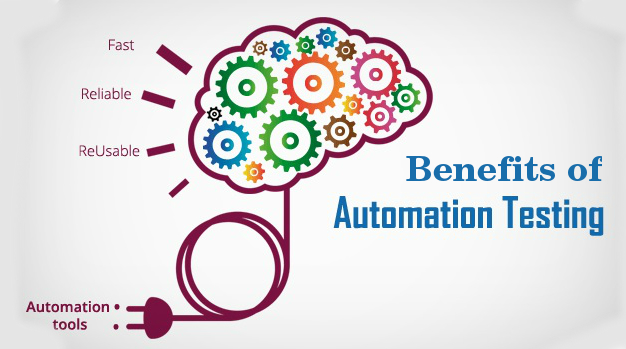If you are a programmer, you will undoubtedly be used to the annoying and ungrateful task of testing your code over and over again until you make sure it works. What's more, you should also make sure that your program does exactly what you want it to do, and even then it is very common that when you add a new functionality to your program, your code will be totally unbalanced, collapsing like a house of cards.
Obviously, all this involves spending valuable hours, changing deadlines and hinder the development of any project. Fortunately, thanks to the automation of tests, it is possible to considerably reduce that lost time.

However, we must bear in mind that it isnt possible to completely get rid of the need to do tests manually. It is not yet possible to automate all processes.
What is the automation of tests?
When we talk about qa automation services, we refer to using a tool to run your set of test cases as many times as necessary until we can ensure that everything works as it should, for example entering data, debugging, and so on. Its recommended recording our series of tests, because the development cycle will require the execution of the same set of tests repeatedly.
Advantages of test automation
- - We can save valuable time and money for the project
- - Doesnt require human intervention
- - Increase the speed of execution of tasks
- - Ensure consistency
- - 70% faster than manual tests
- - Avoid human errors
- - Reusable test scripts
- - Fully reliable results
However, we must point out and remember that automation doesnt work for all types of test cases, especially those test cases that have not yet fully defined their purpose.
What automated test cases?
We recommend the automation of the following test cases:
- - High risk: very important test cases for the company
- - Test cases that must be executed many times
- - Very tedious test cases
- - Test cases whose execution takes a long time
Also, we recommend not automating test cases whose requirements change frequently. It is also not a good idea to automate newly designed cases.
Among the main types of automated testing software out there, we can find:
- - Unit Testing
- - Smoke Testing
- - Functional Testing
- - Integration Testing
- - Keyword Testing
- - Regression Testing
- - Data Driven Testing
- - Black Box Testing
Automatic testing process
If we want to be able to build a fully reliable and safe automated test system, we recommend following the steps below:
a) Choose the most appropriate testing tool for our software
b) Define the scope of the automation
c) Planning, design and development of the automation strategy and plan
d) Execution of tests
e) Maintenance
There are also some practices and tips that we can follow to get the most out of our automation tools:
a) Choose the most appropriate framework
b) Follow the appropriate programming standards when you are writing your automation scripts
c) You can measure the success of automation using metrics
All these testing processes and practices are being used in many web development india agencies and are now more confident to deliver an error free product in the market.
Framework for automation
A framework is a set of automation guidelines that helps us improve the structuring of tests, write less code, and reduce the necessary training period. Four types of framework are used in the test automation software:
- Data Driven Automation Framework
- Keyword Driven Automation Framework
- Modular Automation Framework
- Hybrid Automation Framework
Selection of test tools
Its a very smart measure to choose a test tool that is well adapted to the application that we are going to test. For example, QTP doesnt support Informatica. There are many options available in the market. We recommend these five applications:
1) Testim: this program uses artificial intelligence to accelerate the creation, execution and maintenance of automated tests. It uses dynamic pagers that learn with each execution and adapts correctly to code changes. It integrates with your CI / CD and allows to make visual validations.
2) mabl: this tool offers automated end-to-end tests without the need for any script, and is fully integrated with your delivery channel. Its self-healing tests are totally reliable. Your machine learning models automatically identify and solve any problem.
3) Selenium: this is open source software used for regression tests. It can be used with frameworks such as JUnit and TestNG, and allows us to export scripts recorded in other languages such as Java, Python or C#. You can run multiple tests at the same time. We can also insert comments in the middle of the script. Unfortunately, its IDE is only compatible with the Firefox browser.
4) QTP (MicroFocus UFT): this software is compatible with all the main applications and software environments. To simplify the creation and maintenance of the test case, use the concept of keyboard driven testing. We can build test cases directly from the app. Supports .NET development environment. QTP documents and corrects any defect quickly for the developer.
5) SilkTest: it is the leading product for functional tests in e-commerce applications. It is an object-oriented language, such as Java and C++. Among its functionalities it converts the script commands into GUI commands, being able to execute them on a remote machine or host. SilkTest identifies the movement of the mouse along with the keystrokes, which allows us to have methods of reproduction and recording.
Conclusion
Any QA automation company should always remember that the most important thing is to choose which is the most suitable automation tool, test process and equipment for the project to be successful, even if they dont have as much prestige as other options. It is also important to know how to properly complement automation with manual methods, because they are also necessary.
0 Comment(s)